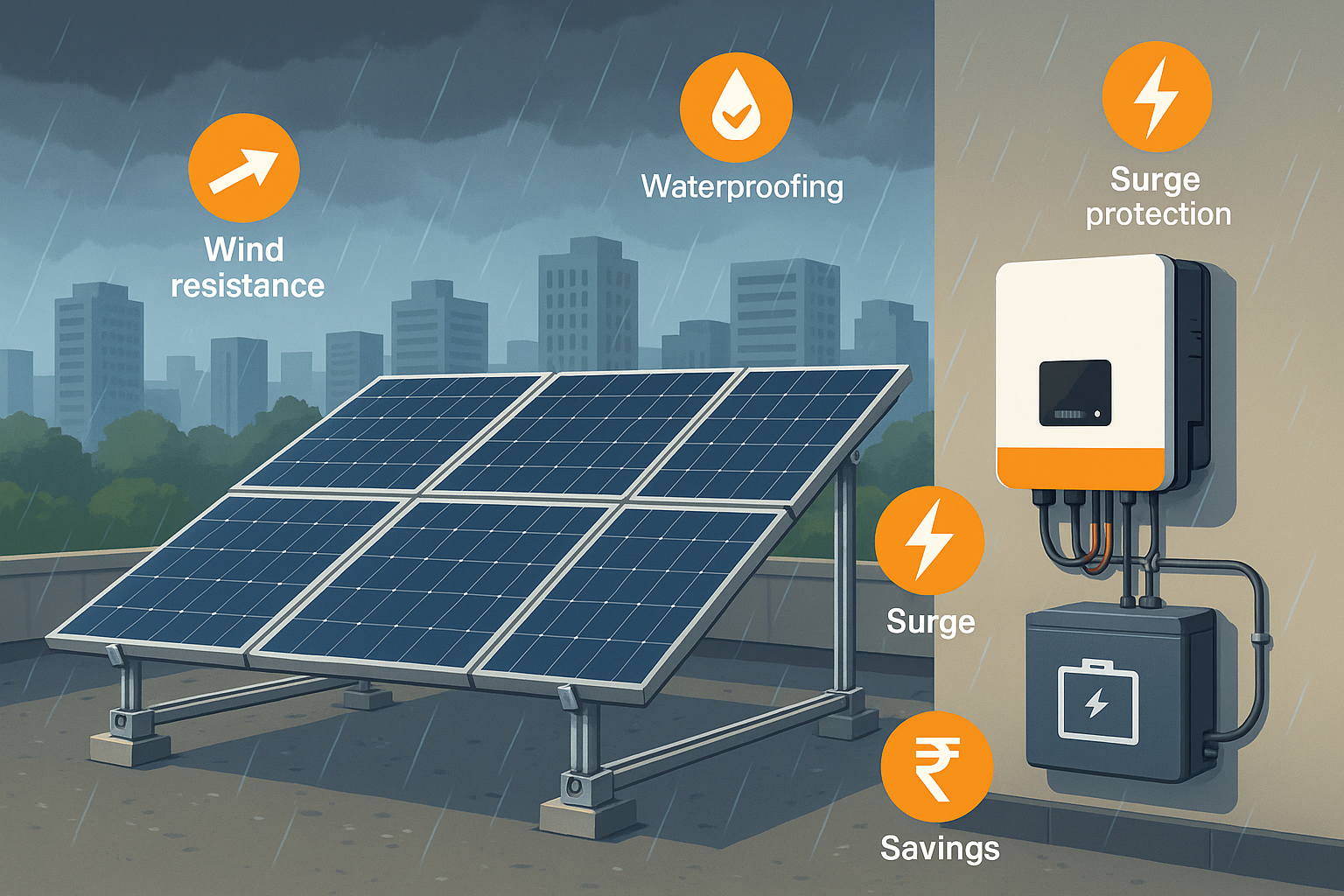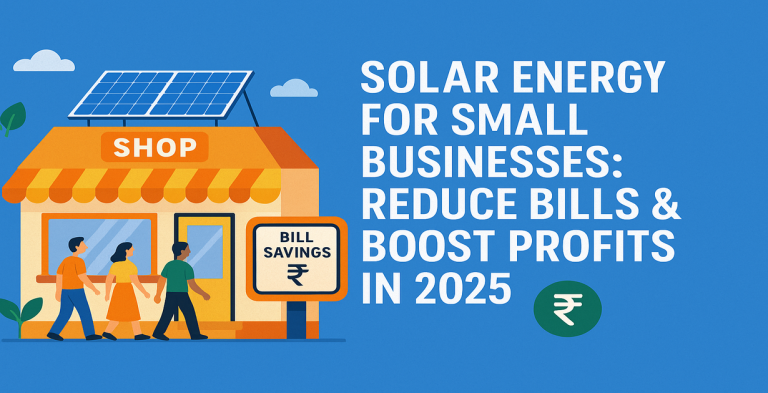Monsoon-Ready Rooftop Solar in India: On‑Grid vs Hybrid, Safety & Savings (2025)
Intro
rains are powerful—your rooftop solar should be too. Here’s how to monsoon‑proof your system, choose between on‑grid and hybrid, and still maximise PM Surya Ghar subsidy and net‑metering benefits.
Main Content
Choose the right plant type:
On‑Grid = lowest upfront cost, best for cities with reliable supply + net metering.
Hybrid = on‑grid + battery backup; ideal where power cuts are common during storms.
Structure & wind resilience: Opt for hot‑dip galvanised MMS (module mounting structure), proper ballast/anchoring, and wind‑rated clamps. Avoid drilling where RCC integrity may be affected—use engineered ballast loads.
Waterproofing & drainage: Keep panel tilt ≥10–15°, maintain clear water pathways, and reseal all cable/roof penetrations with UV‑resistant sealant.
Cabling that survives the season: Use UV‑resistant DC cables, genuine MC4 connectors, tidy cable trays/UV conduits, and drip loops to prevent water ingress.
Surge & earthing protection: Install Type II SPD (DC & AC), DC isolators near arrays, and a dedicated earth pit; verify continuity during pre‑monsoon checks.
Inverter placement: Shade‑cool, splash‑proof, and ventilated. For hybrids, add proper battery BMS clearance and humidity control.
O&M checklist (pre‑ and post‑monsoon): Visual inspection, torque re‑check on fasteners, clean debris, test insulation resistance, verify generation in monitoring app.
Subsidy & compliance: Residential users may qualify under PM Surya Ghar; ensure DISCOM‑approved components, net‑metering application, and vendor documentation.
Call to Action
Ready for a safe, efficient install this monsoon? Find verified on‑grid and hybrid solar vendors near you on SolSetu: https://solsetu.com
Hashtags
#RooftopSolar #PMSuryaGhar #NetMeteringIndia #HybridInverter #SolarVendors #GreenEnergyIndia #MonsoonReady #SolarSafety



